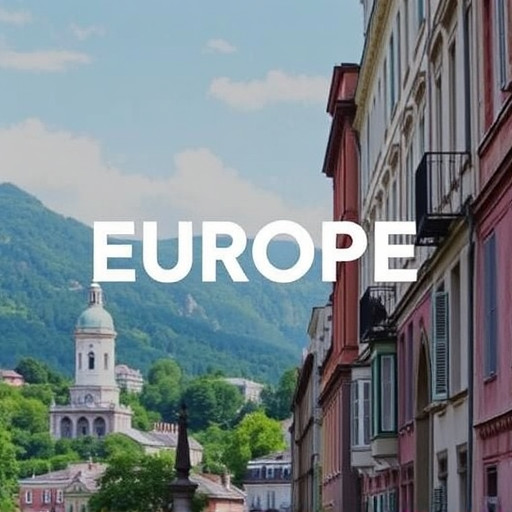The ideal time to visit Europe varies based on personal preferences, destinations, and weather patterns. Spring (March-May) offers mild weather, blooming flowers, and fewer tourists for sightseeing. Summer (June-August) is peak tourist season with warm temperatures suitable for outdoor activities. Fall (September-November) features cooler weather, vibrant foliage, and lower prices. Southern countries are best visited in spring or autumn, while northern areas offer milder weather in shoulder seasons. Central Europe excels in summer for outdoor activities, while spring, autumn, and winter cater to different preferences. Avoid crowds by visiting during April-May or September-October, enjoy festivals like Oktoberfest or Amsterdam's Light Festival, and save money by traveling off-season (spring/autumn) when some attractions may be closed due to colder weather.
The Ultimate Guide to Timing Your European Adventure
When planning a trip to Europe, understanding the best time to visit is key to an unforgettable experience. This comprehensive guide explores the nuances of European seasons, from the blooming beauty of spring to the vibrant festivals of autumn. We delve into regional weather variations, offering insights on how to avoid peak tourist crowds while still enjoying popular attractions. Discover local celebrations and learn why considering the off-season could unlock a more authentic and financially advantageous travel experience in this diverse continent.
- Seasonality: Spring vs Summer vs Fall
- Weather Patterns Across Regions
- Crowds and Tourist Season
- Local Festivals and Events
- Planning for the Off-Season
Seasonality: Spring vs Summer vs Fall

The best time to visit Europe varies greatly depending on personal preferences and what parts of the continent you’re interested in exploring. When considering seasonality, each season offers a unique experience. Spring (March to May) brings mild weather, blooming flowers, and fewer tourists than summer, making it ideal for sightseeing without the crowds. Summer (June to August) is peak tourist season, with warm to hot temperatures perfect for outdoor activities like hiking or visiting beaches along the Mediterranean. Fall (September to November) offers cooler but still pleasant weather, vibrant foliage, and lower prices after the summer rush.
Weather Patterns Across Regions

Europe’s diverse geography means that weather patterns vary widely across regions, influencing the best time to visit each area. The southern countries like Italy and Spain benefit from a Mediterranean climate, characterized by warm, dry summers and mild winters. This makes spring (April-June) and autumn (September-October) ideal for exploring these regions, offering pleasant temperatures and fewer tourists. In contrast, northern countries such as Germany and Scandinavia experience more varied weather with cold winters and cool summers. The best time to visit these places is during the shoulder seasons of spring and early summer or late summer and autumn, avoiding the peak heat or chill.
Central Europe, including France and Switzerland, often sees a mix of sunshine and rain throughout the year. Summer (July-August) is typically the driest and warmest, perfect for outdoor activities like hiking and exploring lakes. Spring and autumn offer milder temperatures and fewer crowds, while winters can be snowy, ideal for winter sports enthusiasts.
Crowds and Tourist Season

The peak tourist season in Europe typically runs from June to August, which is also when crowds are at their most significant. This period offers vibrant, sunny days perfect for exploring iconic landmarks and enjoying outdoor activities. However, it’s a time when prices tend to be highest, and popular destinations can feel overcrowded. If you’re not a fan of throngs of people or want to save some money, consider visiting Europe during the shoulder seasons—April to May or September to October. These months offer milder weather and fewer tourists, allowing for a more relaxed pace and better access to attractions.
Local Festivals and Events

Europe is a continent brimming with vibrant festivals and events throughout the year, offering visitors unique cultural experiences. The best time to visit often aligns with these lively celebrations, filling cities with music, dance, and local traditions. For instance, in late June, Madrid’s vibrant streets come alive during the Festival of San Isidro, featuring parades, flamenco shows, and street parties. Similarly, Oktoberfest in Munich is a world-famous beer festival that attracts millions, usually held in September or early October.
These festivals not only provide entertainment but also offer insights into European heritage and customs. Whether it’s the colorful Amsterdam Light Festival in December or the medieval-themed Julemärkte (Christmas markets) across Germany and Austria in December, there’s a festival to match every interest and time of year. Planning your trip around these events ensures memorable interactions with locals and a deeper understanding of European culture.
Planning for the Off-Season

If you’re looking to save money and avoid the peak crowds, planning a trip during Europe’s off-season is a smart move. The shoulder seasons, spring (March-May) and autumn (September-November), offer mild weather and fewer tourists, making it an ideal time for exploration. During these periods, many attractions have shorter lines, and you might even find lower prices on accommodations and flights.
Keep in mind that some popular destinations may still be quite busy during the off-season, so research individual cities and countries to determine the best times to visit based on your interests. For instance, while art museums and historical sites are generally less crowded, outdoor activities like hiking or visiting theme parks might take a hit due to reduced operating hours or closures in colder months.
When deciding on the best time to visit Europe, considering seasonality, weather, crowds, local events, and off-peak advantages, you can tailor your trip to suit personal preferences. Spring and fall offer milder temperatures and fewer tourists, while summer brings vibrant festivals and longer daylight hours. Depending on your interests and budget, planning a visit during the off-season can unlock unique experiences with fewer crowds and better deals. Ultimately, the ideal time to explore Europe depends on what you hope to achieve during your journey.
